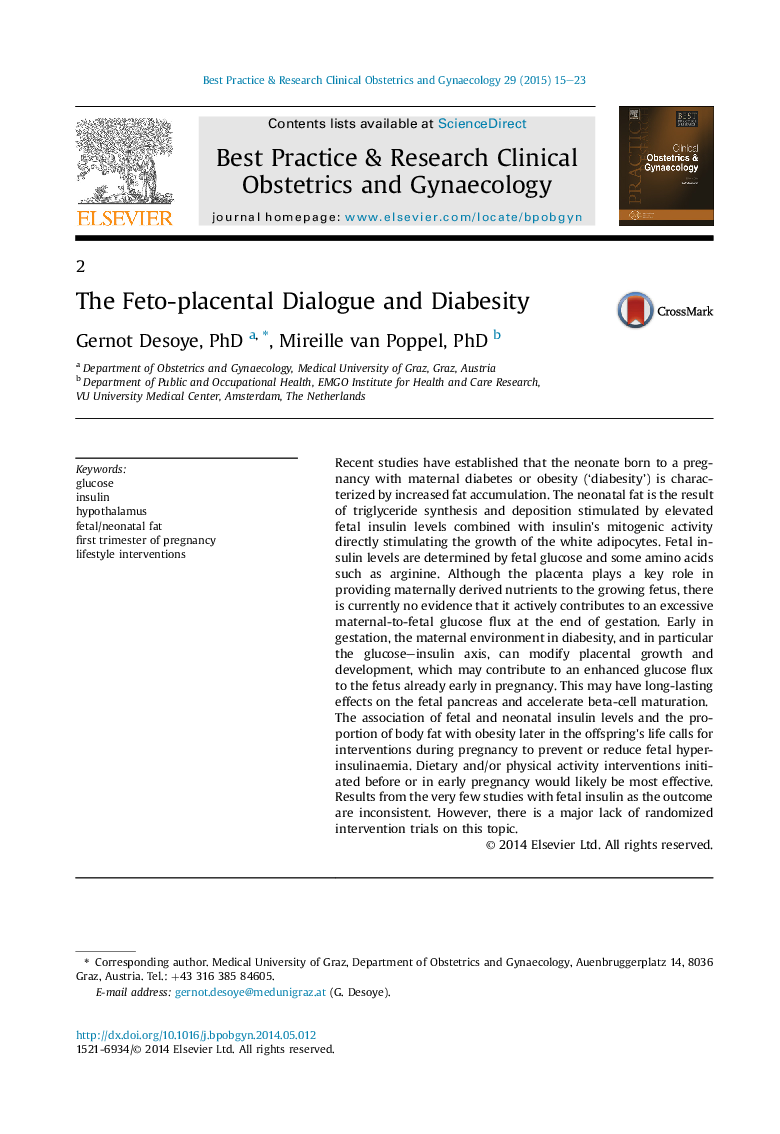| Article ID | Journal | Published Year | Pages | File Type |
|---|---|---|---|---|
| 3907583 | Best Practice & Research Clinical Obstetrics & Gynaecology | 2015 | 9 Pages |
Recent studies have established that the neonate born to a pregnancy with maternal diabetes or obesity (‘diabesity’) is characterized by increased fat accumulation. The neonatal fat is the result of triglyceride synthesis and deposition stimulated by elevated fetal insulin levels combined with insulin's mitogenic activity directly stimulating the growth of the white adipocytes. Fetal insulin levels are determined by fetal glucose and some amino acids such as arginine. Although the placenta plays a key role in providing maternally derived nutrients to the growing fetus, there is currently no evidence that it actively contributes to an excessive maternal-to-fetal glucose flux at the end of gestation. Early in gestation, the maternal environment in diabesity, and in particular the glucose–insulin axis, can modify placental growth and development, which may contribute to an enhanced glucose flux to the fetus already early in pregnancy. This may have long-lasting effects on the fetal pancreas and accelerate beta-cell maturation.The association of fetal and neonatal insulin levels and the proportion of body fat with obesity later in the offspring's life calls for interventions during pregnancy to prevent or reduce fetal hyperinsulinaemia. Dietary and/or physical activity interventions initiated before or in early pregnancy would likely be most effective. Results from the very few studies with fetal insulin as the outcome are inconsistent. However, there is a major lack of randomized intervention trials on this topic.
